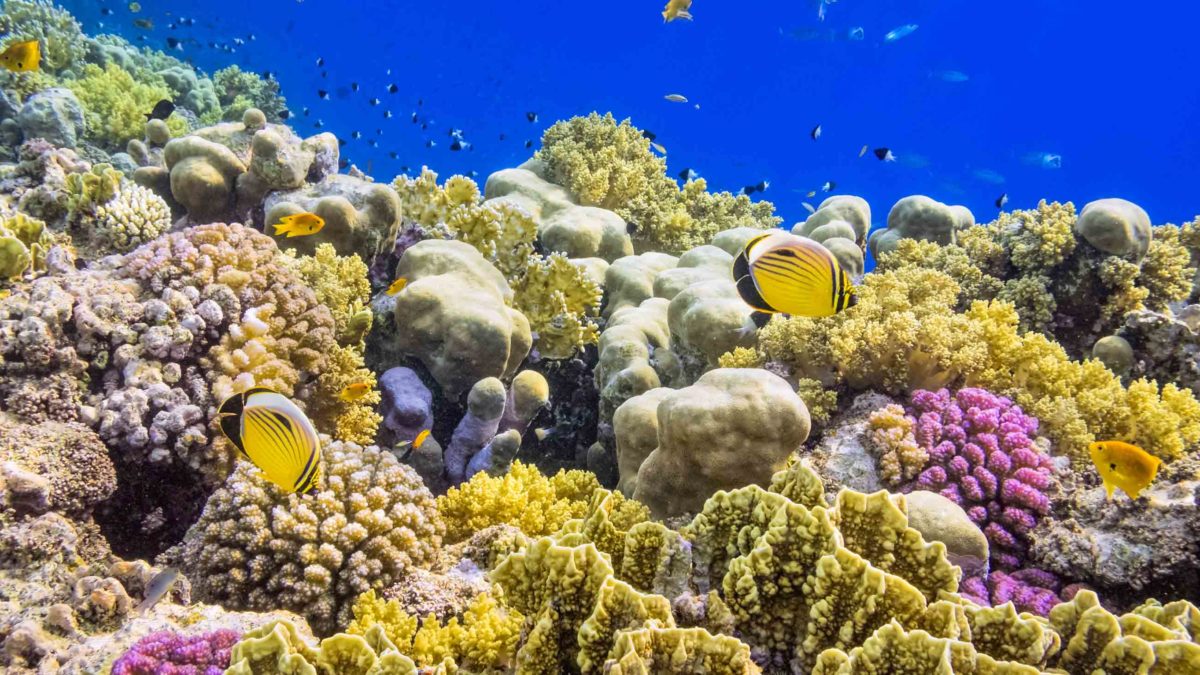High Schoolers Have High Hopes for Saving Corals
Last year was not a good year for the environment — particularly for coral reefs. In addition to the massive die-off in Australia’s Great Barrier Reef, climate change, illegal harvesting, coastal development, destructive fishing practices, and ocean pollution have been driving the world’s wild coral populations to the brink.

Corals are under threat around the globe. Some New York students want to help.
Visual: iStock.com
With 75 percent of reefs currently under the threat of damage or death, there may not seem like much any one person can do. But at a high school in New York, students are learning to grow and study the genetics of captive corals, which they hope to sell to aquarium enthusiasts — and possibly one day introduce back into the wild.
“My students have a love of aquaculture and aquarium-keeping,” says Erin Oshan, the marine biology teacher overseeing the coral project at Cold Spring Harbor High School. “I thought about ways I could incorporate their hobbies with an enriching lesson about coral reef ecosystems that’s environmentally responsible.”
Several other high schools around the country boast high-tech aquaculture programs, which teach students how to breed and raise coral. But Oshan says she believes her program is unique in that it incorporates lessons on aquaculture, conservation and marketing all in one.
The program got started two years ago with help from her classroom’s fish tank technician, Joseph Racioppi of Fishlife Aquariums. She recruited a group of about 20 “very dedicated” students ages 12 to 18 to be a part of the program, which meets after school every other Tuesday. Initially, Racioppi donated the coral-reef growing equipment, but with the help of a school district grant was able to purchase more supplies late last year.
Racioppi takes the students through the process of growing and caring for their coral, about 150 individual specimens of which are kept in a large a warm, sunny greenhouse just outside Oshan’s classroom. To grow them, students follow a standard protocol. They start out with a large piece of coral, which they cut down into many smaller pieces. The students then glue those coral fragments onto round cement platforms roughly the size of drink coasters. By maintaining the temperature, sunlight and mineral conditions in the coral tank, new growth can start to form.
“By repeating the fragmenting process you end up with lots of coral, none of it taken from the wild,” Racioppi says.
Once Oshan’s class has fine-tuned its coral-growing operation, students will collaborate with the school’s business club to create a marketing plan. Later this year Bruce Nash, assistant director for science at Cold Spring Harbor Lab’s DNA Learning Center, will perform DNA extraction and analysis on the coral specimens, allowing the students to identify individual coral species and hybrids.
This “incorporates molecular biology and bioinformatics into the project while possibly enhancing the value of coral strains,” Nash says. Oshan hopes to focus on propagating hardier strains of coral adept at coping with climate change stressors such as higher ocean temperatures and acidity, both of which contribute to coral mortality.
If the program is successful, Oshan says she hopes to get the students involved in a coral replanting program, “flying them to reefs where they could transfer the coral they grow to a wild reef themselves.”
With most wild coral protected under international, domestic and state laws, she’s looking to partner with experts already involved in replanting, such as those at the Mote Marine Laboratory & Aquarium in Sarasota, Florida, which initiated a coral replanting program six years ago.
While that part of the Cold Spring Harbor coral program — perhaps the most exciting part — is a long way off, students say what they’re doing now is still pretty thrilling. “It gives us the chance to give back in a real way while learning new skills,” says eighth grader Hudson De Risi. “It feels good to make a positive impact on the planet.”










